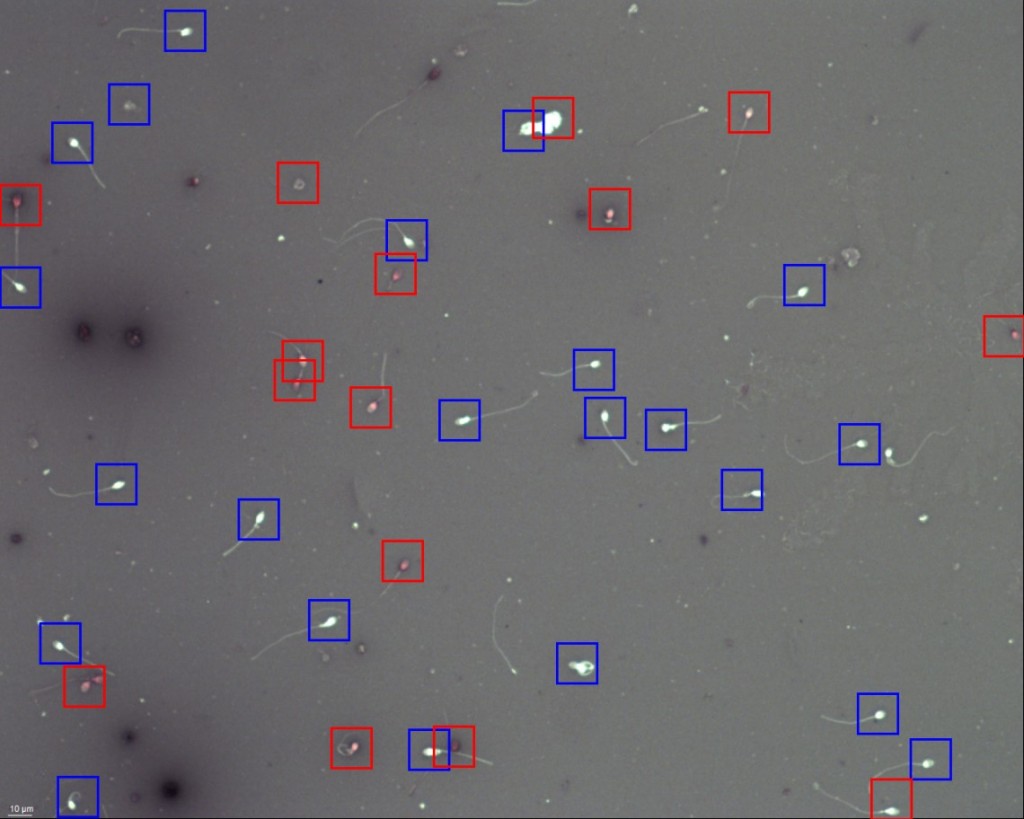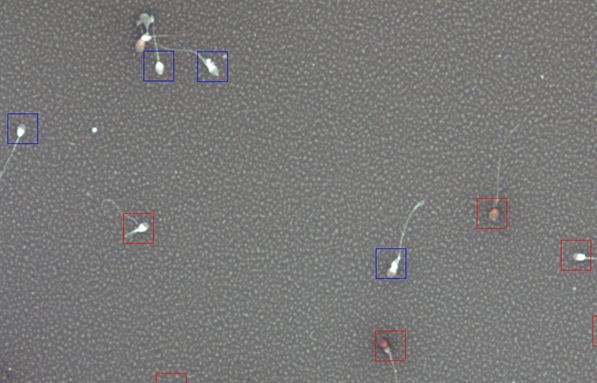BrightVit: a new kit for vitality in brightfield assessment
History, physiological basis, current use and importance

Fig. 1: Greek Goddess of dawn, Eos (eosin derivation)
The word “vitality” (later “viability”) comes from the late 16th century Latin vitalitas which means strong and active, has energy. In sperm biology vitality has quickly become equated to live and non-vital as dead using eosin and nigrosin stains. The name Eosin comes from Eos, the Ancient Greek word for ‘dawn’ and the name of the Ancient Greek goddess of the dawn (Fig. 1). Eosin is a vital stain and will enter cells with defective or “dead” cell membranes. When Eosin enters through dead cell membranes it will stain the cell pink and the cells with intact cell membranes will remain without stain and hence the term dye exclusion method. In order to provide sufficient contrast difference between pink cells (dead) and white cells, nigrosin (latin origin niger = black) is used as a background stain.
The eosin nigrosin stain dates back to publications by Blom (1950), Dott and Foster (1972) and many others. Dott and Foster (1972) made eosin and nigrosin as a hypo-osmotic medium and it seemed to work well for many animal species. The WHO manual in 1987 dictated that eosin and nigrosin be used as two separate media and not combined. Staining of a semen sample would then first be performed in eosin for several minutes and then subjected to nigrosin. However, Mortimer (1994) suggested that the combined stain be made up in 0.9% saline and would accordingly be more physiological. In a follow up study Bjorndahl et al. (2003) evaluated the combined stain made up in 0.9% NaCl to that of using eosin and nigrosin separately. When eosin and nigrosin were used separately there were more dead cells counted than percentage motile. This is clearly wrong and the explanation of this is that eosin over a longer period on its own may kill sperm. Accordingly, in the WHO5 manual of 2010, the combined stain made up in 0.9% saline has been adopted as standard.
Unfortunately, the stain combination of Bjorndahl et al. (2003) always produce a noisy –network like background and sperm vitality needs to be assessed at x1000. Due to the background which often appears like a granular network it is not amenable to CASA analysis which requires a smooth background.
With this historical background in mind the eosin-nigrosin BrightVit stain of Microptic has been developed as a combined vitality stain of eosin-nigrosin in a very specific ratio but also made up as a hypo-osmotic medium. In the development it was important to show four very important aspects:
- The percentage dead cells should always be less than the percentage motile cells.
- The dead cells stained clearly light to deep pink without exception.
- For CASA the background is always even/smooth with no networks apparent (Fig. 2) except in some viscous and hyper viscous samples (dilution then required).
- The combined count of motile cells and dead cells should not exceed 100%.

Fig. 2: Red boxes showing pink – dead sperm. Blue boxes live sperm (x20 objective) . In this example all sperm correctly identified except two sperm in the top middle. However, the software of SCA allows almost immediate rectification of this.
What are the further advantages of the BrightVit stain for Vitality compared to other brightfield methods?
- It can be used for both semen and diluted/swim-up samples.
- It provides in most cases a smooth background which assists greatly in both manual and CASA analysis of vitality.
- The test can be performed manually or by using the automated Vitality CASA module of SCA in brightfield mode (no fluorescence required) Bright field microscopy.
- The pink cell intensity is easily detected manually and by CASA and it is possible to do analysis using the x 20 objective (Fig. 2). This is a great advantage above the WHO5 methodology which dictates using the x100 objective. Accordingly, with the BrightVit methodology many sperm can be analyzed more rapidly because there will be more sperm in each field at x 200 than at x1000.
- For no clear reason there seems to be a great degree of uneven distribution of live compared to dead cells in a smear. Accordingly, it is important to analyze more than 100 cells and routinely we analyze at least 400 cells using automated SCA vitality analysis. This is impractical using manual means but can be done within a few minutes using SCA CASA.
- Since BrightVit stain is made up in a hypo-osmotic medium it is also possible to use this BrightVit vitality kit for the hypo-osmotic swelling test (HOS). We have established that in most instances most of the white cells (vital) seem to swell and accordingly the percentage vitality and the percentage HOS seem very similar and provide further credibility to the test as providing both a vitality and HOS result using the same slide and the same sperm (Fig. 3).

Fig. 3: Example of viscous sample or unknown factor that may cause a poor background and not ideal for SCA CASA Vitality (wash should be performed and then stained). However, even in this semen example all white sperm show osmotic swelling of tails –usually folded back in a loop as it contains a swelling droplet at that point. In contrast the pink sperm have thin straight tails – burst. This also demonstrates that BrightVit is amenable to HOS = hypo-osmotic swelling test.
We have previously reported that:
“The percentage vitality measurement is extremely important in IVF and particularly ICSI if the percentage motility is very low as in the case of asthenozoospermia. It may be possible that in some of these patients there may still be many viable cells. Microptic now offers two options to measure this important aspect. Firstly, in fluorescence mode (using a propidium iodide and Hoechst stain combination) but now also in brigtfield mode using a newly defined nigrosin-eosin stain combination of BrightVit.
Gerhard van der Horst (PhD, PhD)
Senior Consultant
MICROPTIC S.L.



Leave A Comment